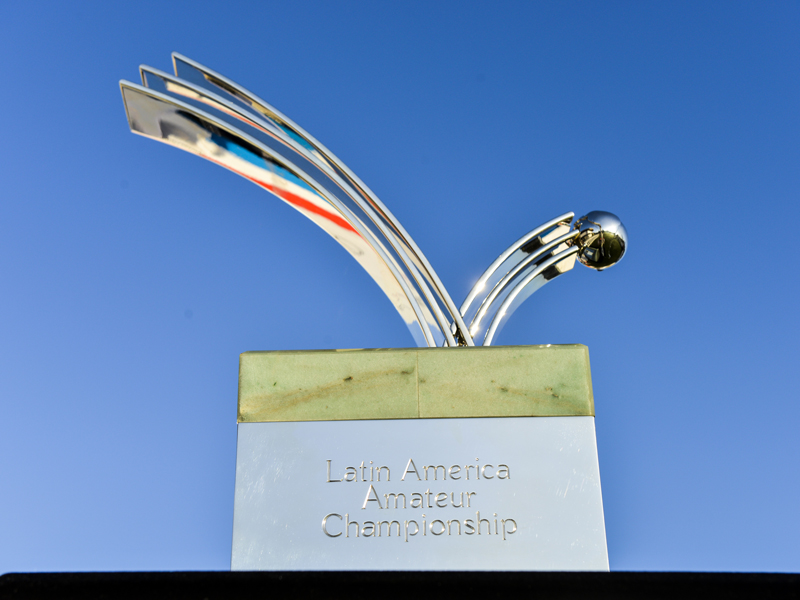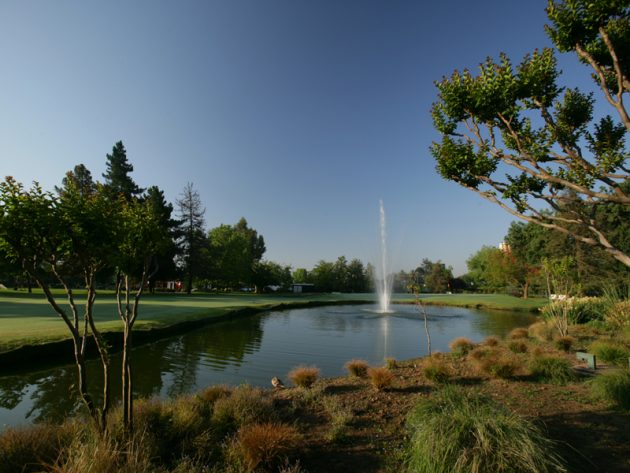From chilly to Chile: Golf Monthly bound for 2018 LAAC
Fergus Bisset is heading for Santiago and the fourth Latin America Amateur Championship


Fergus Bisset looks forward to one of his favourite weeks of the golfing year. Tomorrow he heads from the frozen north east of Scotland to Santiago, Chile for the fourth running of the Latin America Amateur Championship.
Looking out this morning at my ice-covered car and frosted garden I half cheered, half scared myself by checking the week’s forecast for Santiago, Chile where I’ll be by Thursday morning for the fourth instalment of the 2018 LAAC (Latin America Amateur Championship.) The outlook is a steady 33 degrees C and sunshine. That’s at least 33 degrees hotter than Aberdeenshire right now which could come as something of a shock to the system.
But armed with a cap, a pair of lightweight slacks and a vat of factor 50, I’m ready to take on the challenge. I’ve been fortunate enough to attend each edition of the LAAC since its inception in 2015 and it’s one of my very favourite weeks of the year. The tournament is brilliantly run and attended by some of the friendliest people you could meet, all of whom are passionate about golf and the good that it can do. Many of the competitors are potential future stars of the game, who have one eye on the professional ranks but, as it’s open to golfers with a handicap of 5.4 or less, smaller nations are able to send more experienced, career amateurs, adding great character and depth to the event.
The Latin America Amateur Championship was founded and is run by the R&A, The Masters Tournament and the USGA. Open to the leading players from the 29 IOC recognised countries from Central and Southern America and the Caribbean (who are members of the International Golf Federation,) the tournament was started with a view towards the development of golf through the Latin America region.
The LAAC was established following the success of the Asia Pacific Amateur Championship, inaugurated in 2009. That event has played a significant role in the advancement of golf in the Asia Pacific region and has already produced world-beating champions. Hideki Matsuyama was twice a winner of the event, in 2010 and 2011. Going into just its fourth year, the LAAC is already having a similar impact.
The winner of the tournament receives: an invitation to compete in The Masters Tournament; an exemption into The Amateur Championship, an exemption into the U.S. Amateur Championship and any other USGA amateur championship for which he is eligible. In addition, the champion and runner(s)-up receive exemptions into the final stages of qualifiying for The Open Championship with an opportunity to earn a place in The 147th Open Championship at Carnoustie, plus an exemption into final stage qualifying for the U.S. Open with an opportunity to earn a place in the 2018 U.S. Open at Shinnecock Hills.
With such prizes on offer, players and unions are focused on performing well in this event and golfing programmes at both grass roots and elite level are being established and developed in countries across Latin America, with one eye on this tournament and the opportunities it might provide. Many players from the LAAC have gone on to play in the American Collegiate system so a good week in this event could be life-changing.
Get the Golf Monthly Newsletter
Subscribe to the Golf Monthly newsletter to stay up to date with all the latest tour news, equipment news, reviews, head-to-heads and buyer’s guides from our team of experienced experts.
In the first three instalments of the LAAC, the champions have been Matias Dominguez of Chile, Paul Chaplet of Costa Rica and Tomas Goya, also of Chile. Given the success of Chilean golfers in this event through the first three tournaments, it seems fitting the competition will be held in the country’s capital, Santiago this time out.
Looking at the field for this year, there are many names I know from the first three competitions. From Argentina, Alejandro Tosti, a runner-up in 2015 and a semi-finalist in the 2017 British Amateur Championship will be among the favourites, as will the likes of Alvaro Ortiz of Mexico and Venezuela’s Jorge Garcia. But, it will be Chilean player Joaquin Niemann shouldering the weight of home expectation. The Santiago resident comes into the event as the World’s Number 1 ranked amateur. He was tied for second in this event last year and will be desperately keen to make it three Chilean wins in four attempts at the LAAC.

The host course for this year’s event is at the Prince of Wales Country Club in Santiago. The club dates from 1925 and the course from 1930. It was designed by club member Alex MacDonald who was a British businessman and a golf course architect. With a par of 72 and measuring 6,892-yards, it’s not overly long but with narrow fairways it demands accuracy. The bentgrass greens feature subtle contours and slopes that should test the players skill and nerve.
I don’t know an awful lot about Chile except that my mum once visited back in the early 70s. Back then, according to her accounts, the journey took about three weeks and is most effectively charted using a children’s blow-up globe and a red marker pen whilst listening to the theme tune from Indiana Jones.
It’s not that bad these days, although it is quite a long flight (about five films and four G&Ts worth.) Very much worth it though to see some of these youngsters compete – they play with a great amount of energy and flair and it’s fantastic to watch. I’ll be keeping you up to date with the progress of the tournament and with what I see around and off the course as well. With the Andes Mountains as a backdrop, Santiago looks a spectacular city and the reading I’ve done suggests it has a rich culture and history to explore and enjoy.

Fergus is Golf Monthly's resident expert on the history of the game and has written extensively on that subject. He has also worked with Golf Monthly to produce a podcast series. Called 18 Majors: The Golf History Show it offers new and in-depth perspectives on some of the most important moments in golf's long history. You can find all the details about it here.
He is a golf obsessive and 1-handicapper. Growing up in the North East of Scotland, golf runs through his veins and his passion for the sport was bolstered during his time at St Andrews university studying history. He went on to earn a post graduate diploma from the London School of Journalism. Fergus has worked for Golf Monthly since 2004 and has written two books on the game; "Great Golf Debates" together with Jezz Ellwood of Golf Monthly and the history section of "The Ultimate Golf Book" together with Neil Tappin , also of Golf Monthly.
Fergus once shanked a ball from just over Granny Clark's Wynd on the 18th of the Old Course that struck the St Andrews Golf Club and rebounded into the Valley of Sin, from where he saved par. Who says there's no golfing god?
-
 JM Eagle LA Championship Prize Money Payout 2025
JM Eagle LA Championship Prize Money Payout 2025The LPGA Tour heads to California for the JM Eagle LA Championship, where the largest prize money payout of the season so far is on the table
By Mike Hall
-
 Corales Puntacana Championship Prize Money Payout 2025
Corales Puntacana Championship Prize Money Payout 2025The PGA Tour’s latest opposite field event features an attractive prize money payout and some former champions in the field
By Mike Hall